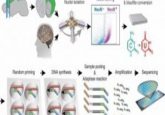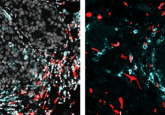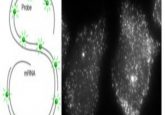Hive mind could explain RNA transfer
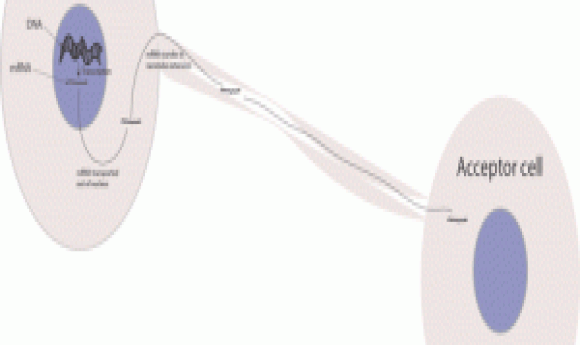
Scientists used a powerful live imaging technique to show that full length mRNA molecules transfer between cells.
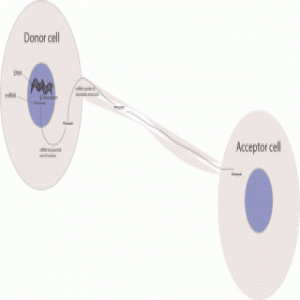
mRNA travelling from one cell to another.
Credit: Amritha Kidiyoor
Cells within a tissue function as a hive by communicating with each other through exchanging molecules such as glucose, ions, and proteins. A new study by Gal Haimovich from the Weizmann Institute of Science reports for the first time that full length mRNA can be transferred between cells by direct cell-to-cell contact (1).
In 2007, researchers reported that microRNAs and fragmented RNAs transfer between cells by exosome diffusion (2). Haimovich wanted to know if this process could be captured in real-time to understand how it was regulated. “Research at this stage was qualitative, not quantitative. I wanted to take it to the imaging level where I could see the kinetics and dynamics of RNA transfer to actually visualize RNA move from one cell to another and to get quantitative data on how many molecules are transferred at the single cell and molecule level,” said Haimovich. To accomplish this, he approached world-renowned imaging expert Robert Singer from Albert Einstein College of Medicine.
The team began their study by culturing immortalized mouse cells containing labelled RNA with wild type immortalized mouse cells (acceptor cells), with these cells either in direct contact or separated. To their surprise, they only observed labelled RNA in acceptor cells when the donor and acceptor cells were in direct contact. “That halted everything we were doing, and I tried to think what could be the mechanism if not diffusion,” said Haimovich.
While attending a local seminar, he overhead the term “cellular nanotubes” and this set his discovery in motion. Cellular nanotubes are extensions of a cell’s plasma membrane used to establish contact with neighboring cells. “I went back to see my images and saw the presence of nanotubes when the donor and acceptor cells were cultured in direct contact” said Haimovich.
This led to the ground-breaking discovery that full-length mRNAs are transferred between cells via cellular nanotubes. Independently, Arjun Raj’s team at the University of Pennsylvania confirmed the findings. “I was really excited about the results and that our collaborators found the same phenomena,” said Haimovich.
The team is currently focusing on understanding the regulation of this process: how many RNAs are transferred at any given time? Is there a restriction on the RNA size?
The impact of this study is far-reaching since RNA transfer could alter the proteome and thereby the functions of acceptor cells. One application the authors are exploring is manipulating cancer cells to take up a cancer-inhibiting mRNA from a donor cell, thereby changing the protein make-up of the cancer cell and inducing cell death.

